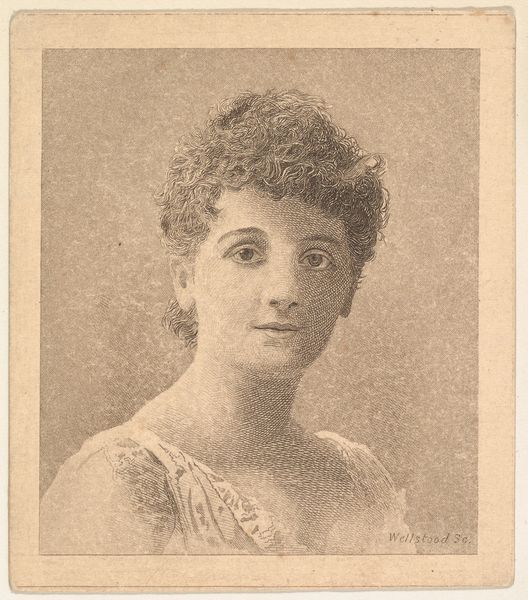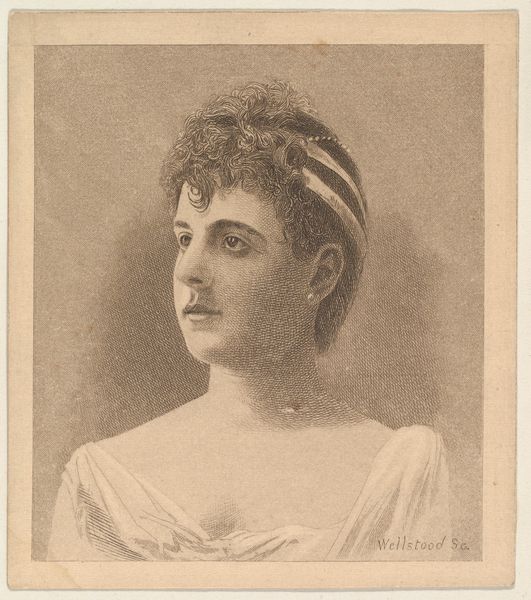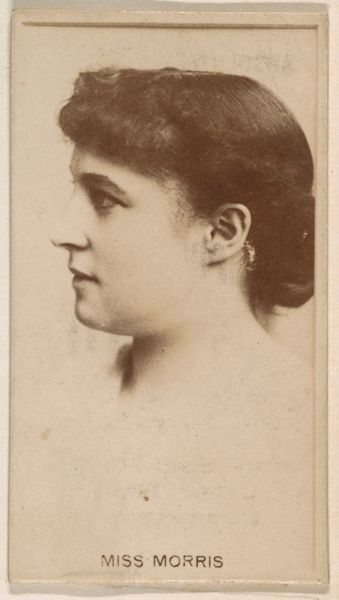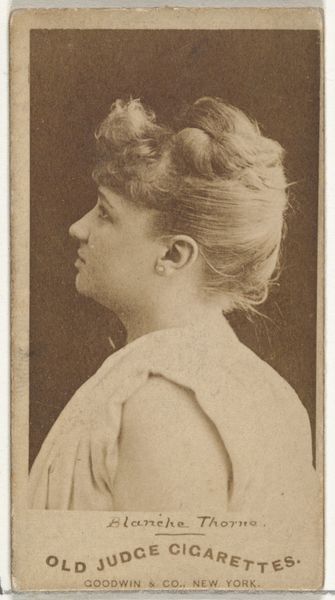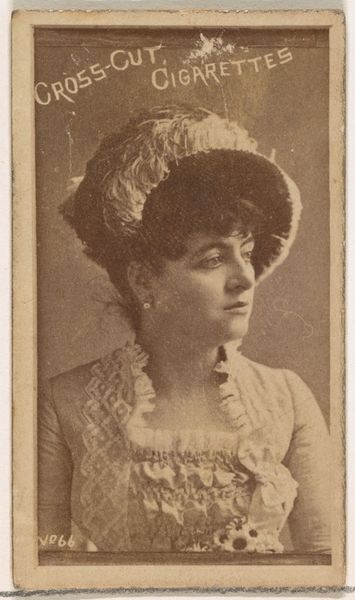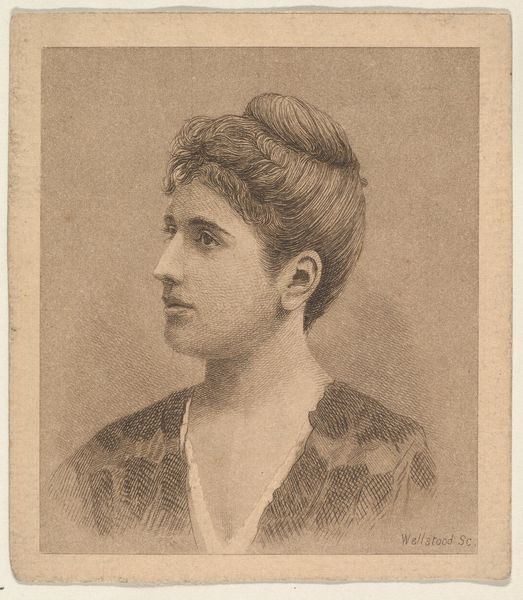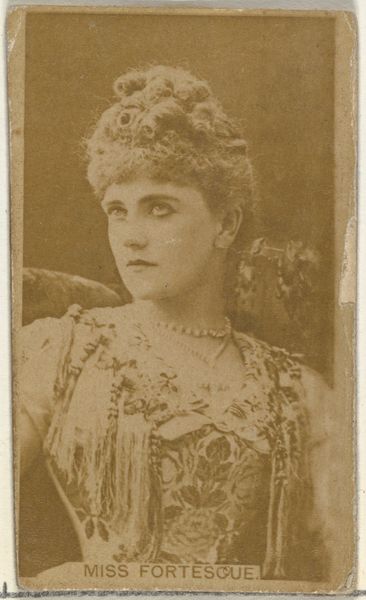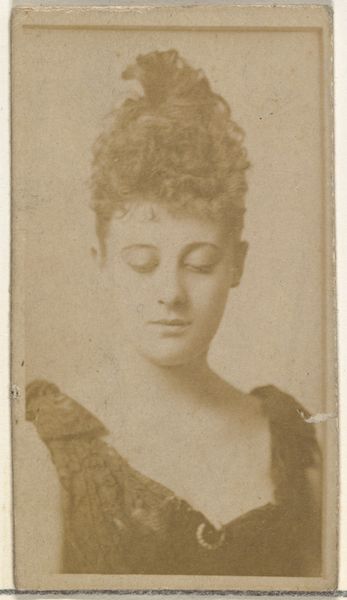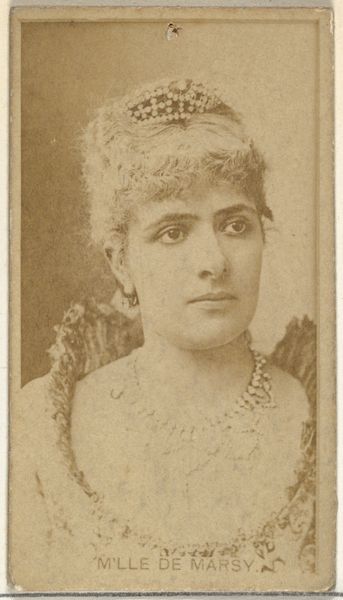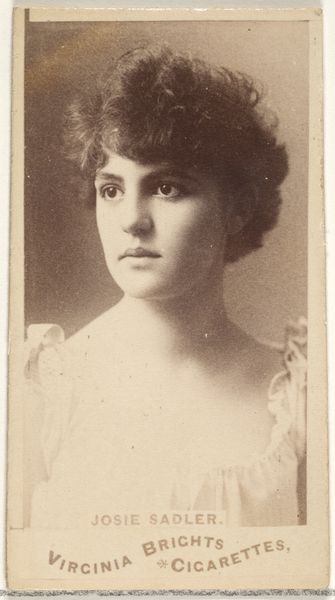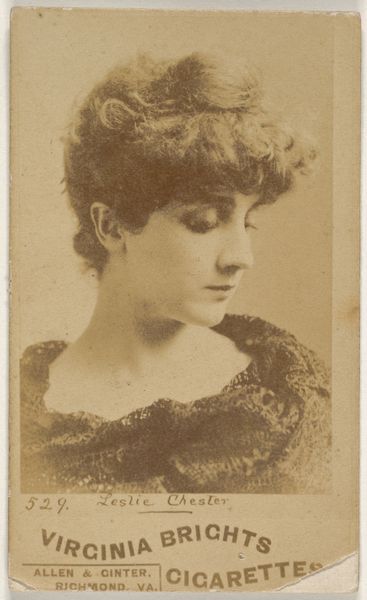
Portrait, from the Women's Portraits series (N198) issued by Wm. S. Kimball & Co. 1889
0:00
0:00
drawing, print
#
portrait
#
drawing
# print
#
figuration
#
academic-art
Dimensions: Sheet: 3 1/4 × 2 13/16 in. (8.2 × 7.2 cm)
Copyright: Public Domain
Curator: Looking at this, I'm immediately struck by the demure, almost wistful, quality. There's a delicate, romantic feel that pulls you in, despite the rather rigid pose. Editor: That romantic feel probably isn't accidental. What we are observing is a print titled “Portrait, from the Women's Portraits series (N198) issued by Wm. S. Kimball & Co.” produced around 1889. Kimball & Co. was a major tobacco manufacturer, and these prints, drawings actually, were often included in cigarette packs. Curator: So, she's selling tobacco? In a roundabout way, I suppose she is. The symbolism feels conflicted. On one hand, her upward gaze and elaborate necklace convey aspiration. But, packaged with tobacco, the image almost feels... transient. As ephemeral as smoke itself. Editor: It’s definitely a sign of the times. Cigarette cards and the era’s emphasis on idealized feminine beauty were heavily intertwined with early consumer culture. To the masses, images of elevated yet anonymous women could stand for status and the aspirations that tobacco companies profited from. Curator: The lack of a distinctive identity is definitely palpable. She represents a type more than a person. Notice the uniform features, perfectly coiffed hair. Almost archetypal, you know? There's a symbolic language to this almost blank representation, where "woman" acts a carrier of cultural desires. Editor: Exactly. Her attire is designed to denote status. Think of the wasp waist silhouettes popularized during this time period. She occupies a social space that both inspires and is, itself, bound by very strict norms. This controlled visual rhetoric was vital in marketing images to an increasingly vast audience. Curator: But despite being a commercial image, there's still something human. Look at the fine lines around her eyes and mouth. There's experience, a sense of lived life. Editor: The print form lends itself to that quality too. While perhaps commercially motivated, prints could offer affordable reproductions that put high art and even images of refinement into ordinary hands. That, in itself, reshaped society's access to ideals. Curator: It all adds up to such a potent mix. On one hand, you see an archetype created through commerce, but you're seeing a fleeting and fragile quality that whispers to the eternal, even though she stands for the aspirations of a time long gone. Editor: A striking reflection on beauty, commerce, and the public imagination, preserved within a simple portrait. Food for thought, certainly.
Comments
No comments
Be the first to comment and join the conversation on the ultimate creative platform.
